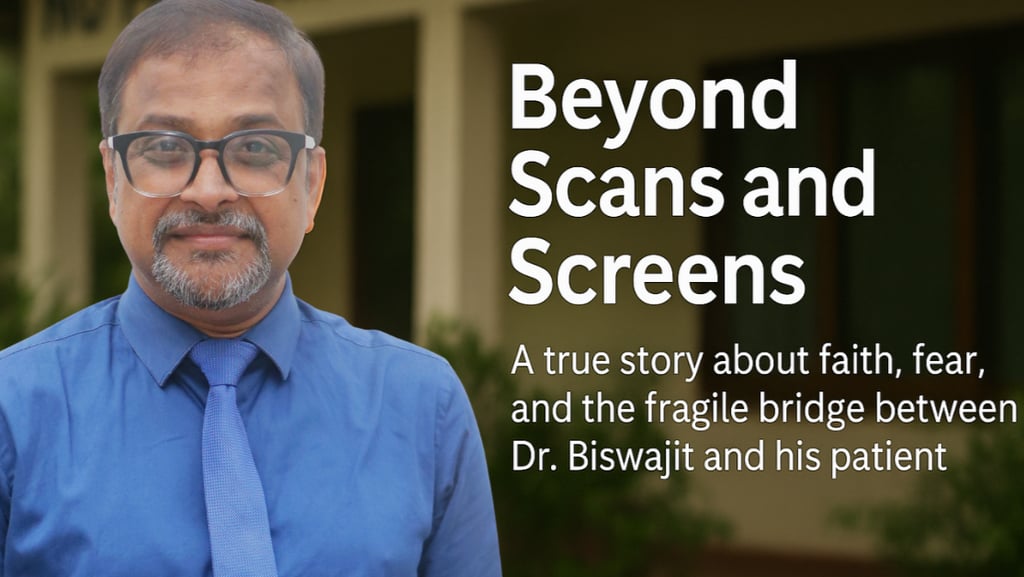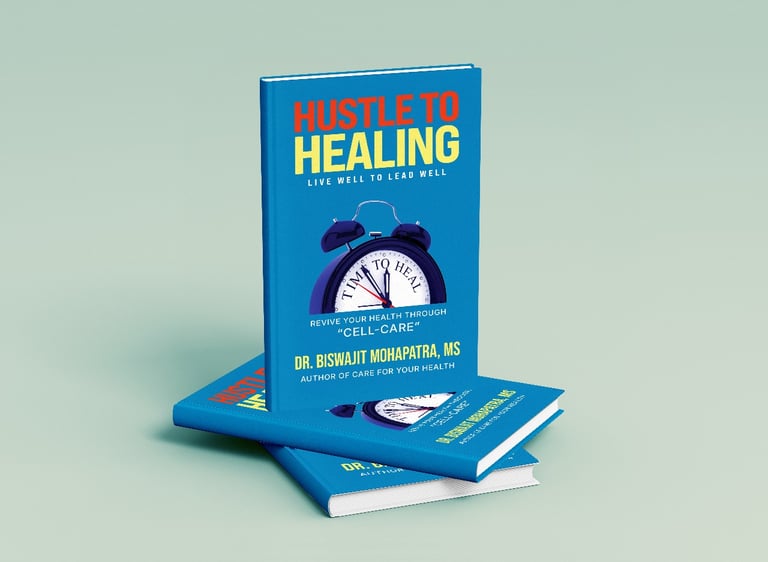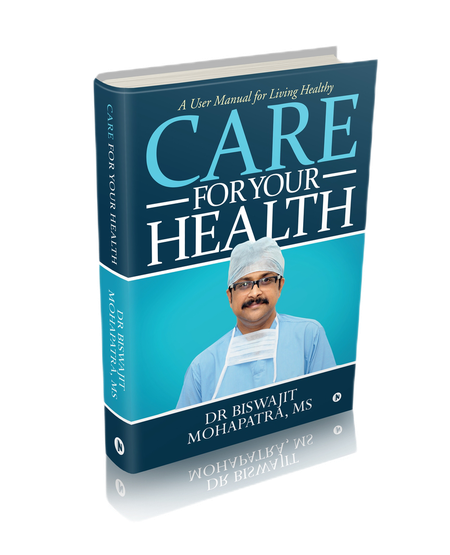

It was one of those exhausting evenings when medicine feels less like science and more like soul-work.
For six long days, I had been treating a fragile diabetic woman, gentle, silent, and enduring. When she first came to my OPD, she had already borne three days of relentless abdominal pain at home. I wondered how she had managed that much suffering in silence.
She was accompanied by her son, a young man in his thirties, and one of our hospital staff who knew me for decades. I had treated that family for almost thirty years. Four generations had walked through my consulting room. Their trust was inherited, like an heirloom.
We admitted her immediately. Investigations began. Specialists were called. Her condition fluctuated, but every time I entered her room, she would sit up, fold her hands, and smile. “Doctor, I’m feeling better,” she would say.
That smile was her medicine.
By the sixth day, she was almost symptom-free, eating well, sleeping, laughing again. Discharge papers were being prepared. Then a follow-up scan revealed an unusual shadow, likely a sequel of her earlier inflammation, not a new crisis. After discussing with my radiologist, I concluded that no surgical intervention was needed. The body had already begun healing itself.
But then the story changed, not because of medicine, but because of misplaced fear.
Her son, young, anxious, armed with half-knowledge and full access to the internet, somehow took hold of the report. Within minutes, he sent it to a doctor in Delhi. And within the next hour, a phone call came: “Air-lift the patient immediately to Delhi. It’s critical.”
Panic exploded like wildfire. The calm ward turned into a courtroom.
The boy’s eyes were red with fear; his voice trembled not with reason but emotion. “Why didn’t you tell us it’s serious? Why didn’t you operate?”
I asked quietly, “How is your mother feeling now?” He hesitated. “Not much improvement,” he said.
I was stunned. Not much improvement? The same woman who was smiling moments ago? Who had started eating normal meals? Sometimes blindness is not in the eyes—it is in the mind clouded by doubt.
I felt pity, not anger. His generation, I realized, doesn’t fear disease. It fears delay. They don’t fear death. They fear discomfort. They have grown up in the age of instant food, instant feedback, instant fixes—so they expect instant healing too.
But life is not an algorithm. And doctors are not magicians.
We are gardeners. We plant, protect, and patiently wait for the body’s inner intelligence to bloom.
I have seen technology advance, but I have also seen humanity regress. In this age of second opinions and online consultations, people forget that healing is not a download, it is a dialogue.
The body doesn’t heal through Wi-Fi signals. It heals through faith, through presence, through surrender.
I told him gently but firmly, “Dear, you can shift your mother’s body to Delhi, but her healing has already started here. Healing doesn’t need geography; it needs faith.”
That evening, I went to see her again. Her son sat in the corner, scrolling through his phone, reading some message that only multiplied his doubts. She looked up at me, eyes moist but serene, and said, “Doctor, I’m not going anywhere. I trust you.”
That single sentence silenced the entire room.
That sentence restored my faith in medicine itself.
That night, I wrote in my diary:
“Between doctor and patient lies a bridge called trust. Every time fear walks onto that bridge, healing slows down. Every time faith steps forward, miracles happen.”
Doubt: The Modern Epidemic
Every day, I meet people who trust Google more than their own gut, who believe a stranger’s prescription more than their doctor’s observation. They forget that healing is not a transaction; it’s a relationship.
Between doctor and patient lies a sacred bridge called trust. Every time fear walks on that bridge, healing slows down. Every time faith steps forward, the body responds.
Your doctor’s experience is not just knowledge; it is accumulated compassion, refined by years of seeing life and death meet at the same bedside.
At No Prescription Point, we teach what I call the Art of Self-Healthcare, the science of healing through awareness, trust, and participation. It reminds us that the body is not an enemy to be subdued but a miracle to be understood.
When the mind is calm, the body cooperates. When the heart is trusting, medicine works faster. When the patient participates, the doctor performs better.
This is not alternative medicine; it is integrated intelligence. It is where science meets surrender, and where healing becomes a dialogue between body, mind, and meaning.
CelluReva Thought
If you’re ever in doubt, remember this: Doctors don’t heal you. Your body does. Doctors only hold the lamp so your body can find its way home.
When you surrender to your doctor, you are not giving up control; you are giving permission for your body to heal. Doubt divides attention; faith directs it.
Doctors don’t own healing. The body does. But doctors stand guard at the gate of that mystery, guiding you through the storm.
So the next time you doubt your doctor, pause. Look into their eyes, not your phone. Look at their effort, not just the report. Because sometimes, the difference between life and loss is just one thing, faith. It’s in your perception




